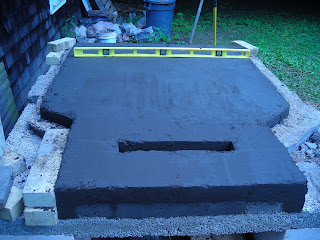
Waiting for tomorrow's outcome has me nervous. Gotta keep busy...
Figured I could get caught up on my blog. Been baking bread a couple times a month. Oven works great, but still learning its pattern.
Today I baked 18 pounds of dough made up into 11 loaves. The dough was phenomenal. The oven was a little too hot, but not extreme. Getting the timing on when to fire, when to clean out, etc. in sinc with the dough seems to be the trick, but I'm ok with darker bread some weeks.
So here's the formula:

10# flour
8# water at about 65F
90 g salt
45 g dry yeast
Pre-heat oven: about 3 hours of fire the night before(great time to make flatbread)
Mix at 8:00 PM night before, mix until fairly lumpless, don't bother with kneading
Start fire 7:45am
Pour onto table 8:00am, fold well, then fold about every 15 minutes til about 10.
Divide and preshape about 10
Spread remaining coals from fire across hearth
Shape onto cloth or into bowls 10:30
Clean oven & mop an hour before baking.
Load into oven about 11:30 or 12:00
Today's bake took 15 minutes! Bread has a thin crust, moist and open crumb, great taste.
Time to put in the Granola.


























